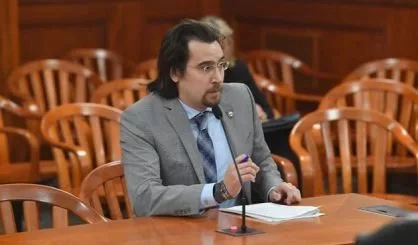Local Realtors routinely point to the watermark year of 2006 as the gold standard. That was the peak housing market year for all of Michigan’s Great Southwest. Well, the number of homes sold last month, in May, was “the highest number in a month of May for any year going back to 2006.” That’s the word from Gary Walter, Executive Vice President of the Southwestern Michigan Association of Realtors, Inc.
Walter tells us, “The housing market in May was record setting in many ways. We continue to see month-over-month increases in the number of houses sold this year. However, in May the number of houses sold reached 357. In our history, we have only reached this number of closed sales three other times; once last year and twice in 2006.”
Walter says when you compare housing sales to last year in May, “The market was up 20-percent (357 vs. 297). May sales surpassed sales in April 2016 by 34-percent. Year-to-date, the number of houses sold was up 14-percent from May 2015 (1,247 vs. 1,098).”
Additionally, the total dollar volume for May was up 23-percent; climbing from $60,210,421 in 2015 to $74,118,426 in May 2016. The total dollar volume in May set a record as the highest since 2006. Year-to-date, the total dollar volume was up 15-percent ($232,200,970 vs. $201,631,077). The year-to-date, total dollar volume in May was the second highest amount in the region’s year-over-year comparison all the way back to 2006.
Both the average selling price in May and the year-to-date average selling price became the highest since 2006. The average selling price in May increased just a little over 2-percent from May 2015 ($207, 614 vs. $202,729). From April to May 2016 the average selling price increased 12-percent ($207,614 vs. $186,172). The year-to-date average selling price increased slightly to $186,207 in 2016 from $183,635 in 2015.
The median selling price of $135,000 in May dropped 6-percent from the $144,000 set in May 2015. The year-to-date median selling price was up 4-percent from a year ago ($130,000 vs. $125,000). The year-to-date median selling price also broke the record to become the highest year-to-date median selling price since 2006.
The median price is the price at which 50% of the homes sold were above that price and 50% were below.
The housing inventory continues to drop and with a 9-percent decline from May 2015, the inventory level was at an eight months-supply. At the end of May the housing inventory was 2,283 units compared to 2,511 in May 2015. In 2010, the inventory level was 16.4-months supply with 3,602 houses for sale.
The number of bank-owned or foreclosed homes as a percentage of all transactions in the market was 11-percent in May, which was the same as in April. This is the lowest percentage for the year. The lowest percentage in 2015 was 9-percent. The highest percentage, in February 2009 was 75-percent.
Locally, the mortgage rate held the same as in April at 3.73. In May 2015, the rate was 4.02. Nationally, the Freddie Mac mortgage rate in May also did not increase. It was 3.61 in April and in May it was 3.60 percent.
According to the National Association of Realtors – Existing-home sales sprang ahead in May to their highest pace in almost a decade, while the uptick in demand this spring amidst lagging supply levels pushed the median sales price to an all-time high. All major regions except for the Midwest saw strong sales increases last month.
Total existing-home sales, which are completed transactions that include single-family homes, townhomes, condominiums and co-ops, grew 1.8-percent to a seasonally adjusted annual rate of 5.53 million in May from a downwardly revised 5.43 million in April. With last month’s gain, sales are now up 4.5-percent from May 2015 (5.29 million) and are at their highest annual pace since February 2007 (5.79 million).
Lawrence Yun, is chief economist for the National Association of Realtors. He says existing sales continue to hum along, rising in May for the third consecutive month. He says, “This spring’s sustained period of ultra-low mortgage rates has certainly been a worthy incentive to buy a home, but the primary driver in the increase in sales is more homeowners realizing the equity they’ve accumulated in recent years and finally deciding to trade-up or downsize.” He adds, “With first-time buyers still struggling to enter the market, repeat buyers using the proceeds from the sale of their previous home as their down payment are making up the bulk of home purchases right now. Barring further deceleration in job growth that could ultimately temper demand from these repeat buyers, sales have the potential to mostly maintain their current pace through the summer.”
Surpassing the peak median sales price set last June ($236,300), the median existing-home price for all housing types in May was $239,700, up 4.7-percent from May 2015 ($228,900). May’s price increase marks the 51st consecutive month of year-over-year gains.
Regionally, existing-home sales in the Midwest dropped 6.5-percent to an annual rate of 1.30 million in May, but are still 3.2-percent above May 2015. The median price in the Midwest was $190,000, up 4.8-percent from a year ago.
The share of first-time buyers was 30 percent in May, down from 32 percent both in April and a year ago. First-time buyers in all of 2015 also represented an average of 30 percent.
Earlier this month, NAR released a new survey looking at the home buying opportunities of student debt borrowers who are current in their repayment. The findings affirmed the notion that repaying student debt is a contributing factor to the low homeownership rate among young adults and the underperforming share of first-time buyers. Nearly three-quarters of non-homeowners in the survey believed that their student debt is delaying them from buying a home, with most of them citing not being able to save for a down payment as the primary reason.
National Association of Realtors President Tom Salomone, the broker-owner of Real Estate II, Inc says, “At a time of historically low interest rates, responsible student loan borrowers should have the opportunity to refinance their loans from their current rates, which can oftentimes run over double-digit percentage points.” The Coral Gables, Florida Realtor notes, “In addition to policy proposals that streamline income-based repayment programs and allow student loan borrowers the ability to refinance into lower rates, NAR supports those that promote student loan simplification, clarity and education. Furthermore, it’s important that mortgage underwriting guidelines related to student loan debt are standardized and do not impair homeownership opportunities.”
All-cash sales were 22-percent of transactions in May, down from both 24-percent in April and a year ago. Individual investors, who account for many cash sales, purchased 13-percent of homes in May, unchanged from April and down from 14-percent a year ago. Sixty-three percent of investors paid cash in May.
Nationally, the total housing inventory at the end of May rose 1.4-percent to 2.15 million existing homes available for sale, but is still 5.7-percent lower than a year ago (2.28 million). Unsold inventory is at a 4.7-month supply at the current sales pace, which is unchanged from April.
Yun tells us, “Existing inventory remains subdued throughout much of the country and continues to lag even last year’s deficient amount. While new home construction has thankfully crept higher so far this year, there’s still a glaring need for even more, to help alleviate the supply pressures that are severely limiting choices and pushing prices out of reach for plenty of prospective first-time buyers.”
The numbers reported for local sales include residential property in Berrien, Cass and the westerly 2/3 of Van Buren counties and should not be used to determine the market value of any individual property. If you want to know the market value of your property, please contact your local Realtor.






